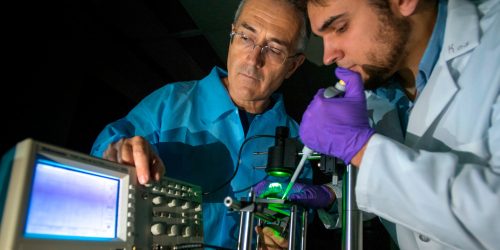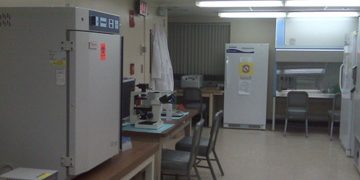







About the Applied Dynamic Mechanics Laboratory
The goal of Dr. Lykotrafitis’ laboratory is to study, by combining experimental, clinical, and computational investigation, how changes in the biomechanical properties of cells and subcellular structures influence, and are influenced by, the onset and progression of SCD to support diagnosis, pharmacotherapy and prevention of life threatening complications. The overall objective is to quantitatively understand the biophysical mechanisms related to hydroxyurea and its effect on sickle erythrocytes in vitro. Dr. Lykotrafitis’ laboratory currently combines experimental techniques conducted via AFM with molecular dynamics simulations.
 Lab News
Lab News
- Differential Control of Small-conductance Calcium-activated Potassium Channel Diffusion by Actin in Different Neuronal Subcompartments May 11, 2023Small-conductance calcium-activated potassium (SK) channels show a ubiquitous distribution on neurons, in both somatodendritic and axonal regions. SK channels are associated with neuronal activity regulating action potential frequency, dendritic excitability, and synaptic plasticity. Although the physiology of SK channels and the mechanisms that control their surface expression levels have been investigated extensively, little is known […]Shiju Gu
- Dynamics of the axon plasma membrane skeleton March 20, 2023It was recently revealed via super-resolution microscopy experiments that the axon plasma membrane skeleton (APMS) comprises a series of periodically arranged azimuthal actin rings connected via longitudinal spectrin filaments forming an orthotropic network. The common perception is that APMS enhances structural stability of the axon but its impact on axon deformation is unknown. To investigate […]Zhaojie Chai